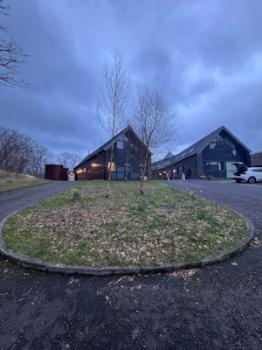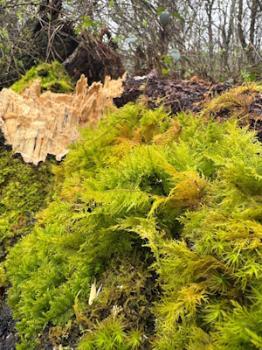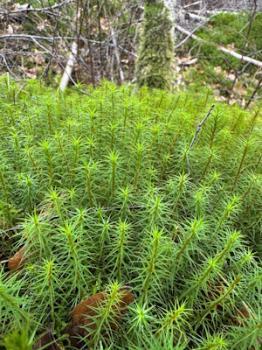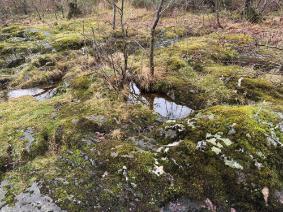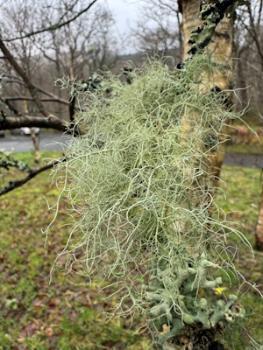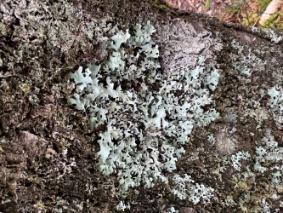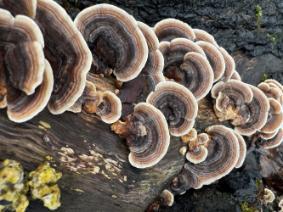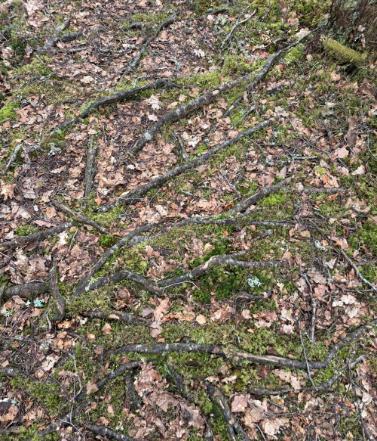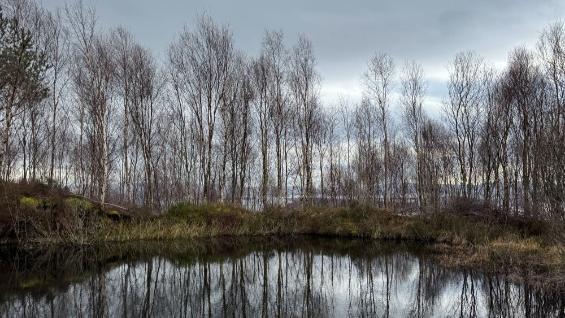A Walk Through Nature’s Living Tapestry
Published: 8 May 2025
Reflections from the SCAF Residential Writing Retreat by Debabrata Dutta
By Debabrata Dutta, Marie Curie Postdoctoral Fellow, Heriot Watt University.
This year, I had the opportunity to join the Scottish Alliance for Food's residential writing retreat from March 3–6, 2025. The event took place at the Scottish Centre for Ecology and the Natural Environment, on the banks of Loch Lomond, offering us a unique opportunity to spend time in the less accessible areas of the Trossachs National Park. As a plant biologist, I have always been fascinated by plants and nature. Recently, I started a new postdoctoral position at Heriot-Watt University in Edinburgh, having relocated from abroad. Scotland’s stunning scenery, diverse wildlife, rich forests, and vast peatlands were entirely new to me, and I was truly captivated.
During our spare time at the retreat, we took part in group walks around the loch, immersing ourselves in the rich biodiversity of this iconic Scottish landscape. Below I introduce some of the mosses, fungi, lichens, ferns, and habitats we encountered along the way, each carrying significant ecological importance.
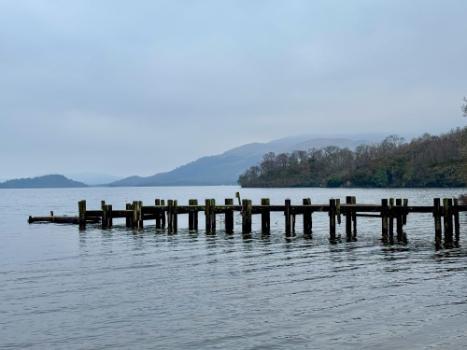
Mosses: The Green Carpet of the Woodland
Glittering Woodmoss (Hylocomium splendens)
This moss is a cornerstone of Scotland’s Pinus sylvestris-Hylocomium splendens woodlands (1). It forms lush carpets on the forest floor while stabilizing soil and retaining moisture— essential components of healthy woodland ecosystems (2). Recognisable by its distinctive "stair-step" growth pattern, wood moss has historical uses in traditional insulation and wound care due to its absorbent properties (3). Today, its capacity to sequester carbon is instrumental in mitigating climate change (4).
Irish mosses (Polytrichum commune)
Polytrichum commune is a stalwart of peatlands and damp woodland glens. Its rigid, deep-green tufts form resilient mats that anchor fragile peat soils, critical for reducing carbon in Scotland’s globally significant peatland ecosystems (5). This moss acts as a natural sponge, slowing water runoff in upland areas and mitigating flooding in downstream communities (6). Historically, its water-resistant stems were woven by Scottish crofters into thatching for bothy roofs, while its antimicrobial properties saw use in poultices for livestock (7). Today, it remains a linchpin of biodiversity, sheltering rare invertebrates like the Bog Sun-jumper spider and providing nesting material for moorland birds (8).
Bryophytes: Nature’s Pioneers in Scottish Wilderness
Bryophytes, which include mosses, are the first colonisers of barren landscapes, laying the foundation for future forests by stabilising the soil and enriching it with organic matter (9). Unlike higher plants, bryophytes produce spores rather than seeds and rely on water for reproduction. In Scotland’s harsh environments, where trees struggle to survive on rocky soils, mosses pave the way for plant succession.
Lichens: Nature’s Symbiotic Marvels
Beard Lichens (Usnea spp.)
Lichens are remarkable in connecting fungi, algae or cyanobacteria (10). Beard lichens, which drape from Scotland’s pollution-free trees, act as natural air quality monitors (11). Their usnic acid content provides antibacterial and antifungal properties (12), used for centuries by Indigenous cultures to treat infections and respiratory issues (13). Beyond medicine, these lichens have dyed fabrics and perfumed the air (14). Modern science is now exploring their potential to fight antibiotic-resistant superbugs (15).
Oakmoss (Evernia prunastri) - not a moss but lichen
Prized in perfumery for its rich, earthy scent (16), oakmoss grows on oak trees and helps regulate forest humidity while creating microhabitats for tiny creatures (17). However, its use in fragrances is now limited due to allergy concerns. Historically, it doubled as a natural antimicrobial remedy (18). Ecologists value oakmoss as a health indicator for forests, reflecting the balance of nutrients and clean air (10).
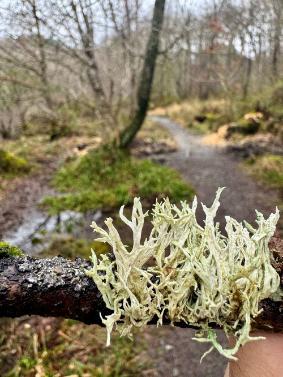
Hypotrachyna sp
Found clinging to ancient oaks and coastal rocks, Scotland’s Hypotrachyna lichens add a silvery lace to misty woodlands like Scotland’s temperate rainforests. These “pale shield lichens” thrive in clean air, filtering nutrients from rain and mist—a natural barometer of ecosystem health (19). Their crinkled fronds shelter tiny beetles and fungi, while their slow growth tracks centuries of environmental shifts (20). They now guide conservation in rewilding zones like Glen Affric, where their presence signals a thriving, ancient ecosystem (21).
Fungi: The Decomposer and The Hidden Network of the Forest
Turkey Tail (Trametes versicolor)
This vibrant, fan-shaped fungus is a forest recycler, breaking down dead wood to nourish the soil (22). Its striking bands of colour—resembling that of a turkey’s tail—make it a favourite for teaching biodiversity. Traditional healers and modern scientists alike praise its immune-boosting compounds, which are being studied for cancer therapy (23). Turkey tail also shows promise in cleaning up environmental pollutants (24), proving that even decay can be transformative.
The Secret Conversations of Plants: Nature’s Underground Network
Much like humans communicating with each other, plants exchange information underground through mycorrhizal fungi. These networks allow them to share nutrients, send distress signals about pests and diseases, and even support weaker plants by transferring essential compounds—a phenomenon sometimes called the “Wood Wide Web” (25), (26). Above ground, plants release volatile organic compounds into the air when under attack, warning their neighbours to activate defence mechanisms27. Plants release root exudates that can attract beneficial microbes or suppress competing plants, helping them thrive in competitive environments.
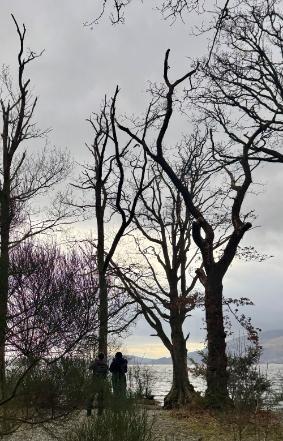
A Twisted Tale: The Mystery of Spiral Growth
During our walk, we noticed a plant spiralling around another—a striking example of how plants adapt to their environment. This twisting happens because of a special plant hormone (auxin) that helps control how the plant grows. The way this hormone spreads through the plant, along with the help of a protein called Twisted Dwarf 1, causes the spiral shape we see. (29).
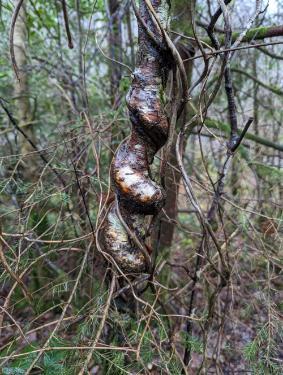
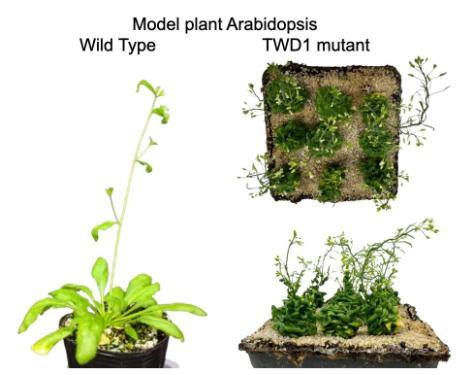
The Winter Woods: Bare Branches and Evergreen Survivors
In the Scottish winter, the landscape is often dominated by bare branches, with most deciduous trees shedding their leaves to conserve water and energy. This adaptation helps them survive the harsh, cold months when water is scarce due to freezing temperatures. However, evergreen conifers like Scots pine (Pinus sylvestris) retain their green needles throughout the year. Their waxy, needle-like leaves minimise water loss, and their specialised cellular structure prevents freezing damage (30). These evergreens play an important role in providing a year-round habitat for wildlife and maintaining the forest's carbon balance, standing resilient amidst the seasonal transformations of the Scottish wilderness.
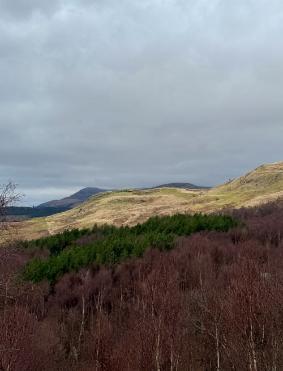
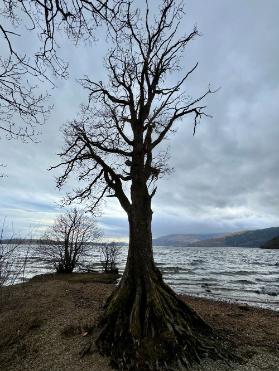
The Ever-Changing Landscape: A Story of Succession
In the boggy, waterlogged areas we crossed, we saw the early stages of ecological succession. Over time, these wetlands will transform into woodlands, as mosses, lichens, and fungi pave the way for larger plants and trees (31). Nature is never static; it’s a continuous process of renewal and change.
Why it matters
The natural world operates in a delicate balance, where even the smallest organisms play a critical role in sustaining life. The examples we encountered—mosses anchoring peatlands, lichens signalling air quality, fungi recycling nutrients, and plants communicating underground—are just fragments of a vast, interconnected system. A single species’ extinction can trigger cascading effects, disrupting entire ecosystems and, ultimately, human livelihoods. Today, with human-driven climate change and habitat loss threatening biodiversity, understanding these ecological interdependencies is more important than ever. By protecting these intricate networks, we safeguard not just the wilderness but also our own future.
Acknowledgements
The author sincerely thanks SCAF for supporting the writing retreat and providing a travel grant. Special thanks to Dr Laura Haag from the University of Glasgow for encouraging me to draft this article, as well as providing the twisted tree image. The author is also grateful to Subhankar Bera, Jagiellonian University for offering the image of wild-type Arabidopsis plant. Appreciation is also extended to Plantlife Scotland for creating a wonderful catalogue of Scotland's flora, which was useful for identification.
References:
1) Rodwell, J. S. (1991). British Plant Communities, Volume 1: Woodlands and Scrub. Cambridge University Press, Cambridge, UK.
2) Kimmerer, R. W. (2003). Gathering Moss: A Natural and Cultural History of Mosses. Oregon State University Press, Corvallis, OR, USA.
3) Turner, N. J., Thomas, J., Carlson, B. F., & Ogilvie, R. T. (1980). Ethnobotany of the Hesquiat Indians of Vancouver Island. British Columbia Provincial Museum, Victoria, BC, Canada.
4) Lindo, Z., & Gonzalez, A. (2010). “The Bryosphere: An Integral and Influential Component of the Earth’s Biosphere.” Ecosystems, 13(5), 612–627.
5) Lindsay, R. (2010). Peatbogs and Carbon: A Critical Synthesis. University of East London.
6) Thompson, D. B. A., et al. (2017). “Upland Peatlands and Flood Mitigation.” Journal of Applied Ecology, 54(3), 789–798.
7) Sanderson, N. (2005). Mosses in Traditional Scottish Culture. Botanical Society of Scotland.
8) Natural England (2020). Peatland Biodiversity Review.
9) Raven, P. H., Evert, R. F., & Eichhorn, S. E. (2019). Biology of Plants. W.H. Freeman.
10) Nash, T. H. (2008). Lichen Biology. Cambridge University Press.
11) Richardson, D. H. S. (1992). Pollution Monitoring with Lichens. Richmond Publishing.
12) Ranković, B., & Kosanić, M. (2015). “Antimicrobial Properties of Lichens.” Phytochemistry Reviews, 14(5), 765–775.
13) Vartia, K. O. (1973). “Antibiotics in Lichens.” In The Lichens (pp. 547–561). Academic Press.
14) Huneck, S., & Yoshimura, I. (1996). Identification of Lichen Substances. Springer.
15) Molnár, K., & Farkas, E. (2010). “Lichen Secondary Metabolites as Possible Antibiotic Agents.” Mini-Reviews in Medicinal Chemistry, 10(2), 107–112.
16) International Fragrance Association Standards. 2018.
17) Brodo, I. M., Sharnoff, S. D., & Sharnoff, S. Lichens of North America. Yale University Press, 2001.
18) Culberson, C. F. Chemical and Botanical Guide to Lichen Products. University of North Carolina Press, 1969.
19) Coppins, B. J. “Lichens as Indicators of Environmental Health.” British Lichen Society Bulletin, vol. 99, 2006, pp. 12–18.
20) Averis, A. Plants and Habitats: An Introduction to Common Plants and Their Habitats in Britain and Ireland. Self-published, 2013.
21) Smith, A. Highland Ethnobotany. Birlinn Press, 2015.
22) Stamets, P. Mycelium Running: How Mushrooms Can Help Save the World. Ten Speed Press, 2005.
23) Zhou, X., et al. “Polysaccharides from Trametes versicolor and Their Anti-Tumor Activities.” Carbohydrate Polymers, vol. 131, 2015, pp. 179–185.
24) Pointing, S. B. “Feasibility of Bioremediation by White-Rot Fungi.” Applied Microbiology and Biotechnology, vol. 57, no. 1, 2001, pp. 20–33.
25) Simard, S. W., et al. “Net Transfer of Carbon Between Ectomycorrhizal Tree Species in the Field.” Nature, vol. 388, no. 6642, 1997, pp. 579–582.
26) Baldwin, I. T., et al. “Volatile Signaling in Plant-Plant Interactions.” Science, vol. 311, no. 5762, 2006, pp. 812–815.
27) Bais, H. P., et al. “The Role of Root Exudates in Rhizosphere Interactions with Plants and Other Organisms.” Annual Review of Plant Biology, vol. 57, 2006, pp. 233–266.
28) Friml, J. “Auxin Transport—Shaping the Plant.” Current Opinion in Plant Biology, vol. 6, no. 1, 2003, pp. 7–12.
29) Geisler, M., et al. “TWISTED DWARF1 Mediates Auxin Transport Dynamics.” Plant Cell, vol. 28, no. 10, 2016, pp. 2477–2491.
30) Crawford, R. M. M. “Trees by the Sea: Scotland’s Coastal Conifers.” Botanical Journal of Scotland, vol. 57, no. 1, 2005, pp. 1–15.
31) Walker, L. R., & del Moral, R. Primary Succession and Ecosystem Rehabilitation. Cambridge University Press, 2003.
This blog is authored by a SCAF member and may not reflect the views and opinions of the wider SCAF membership.
First published: 8 May 2025
<< Blog


